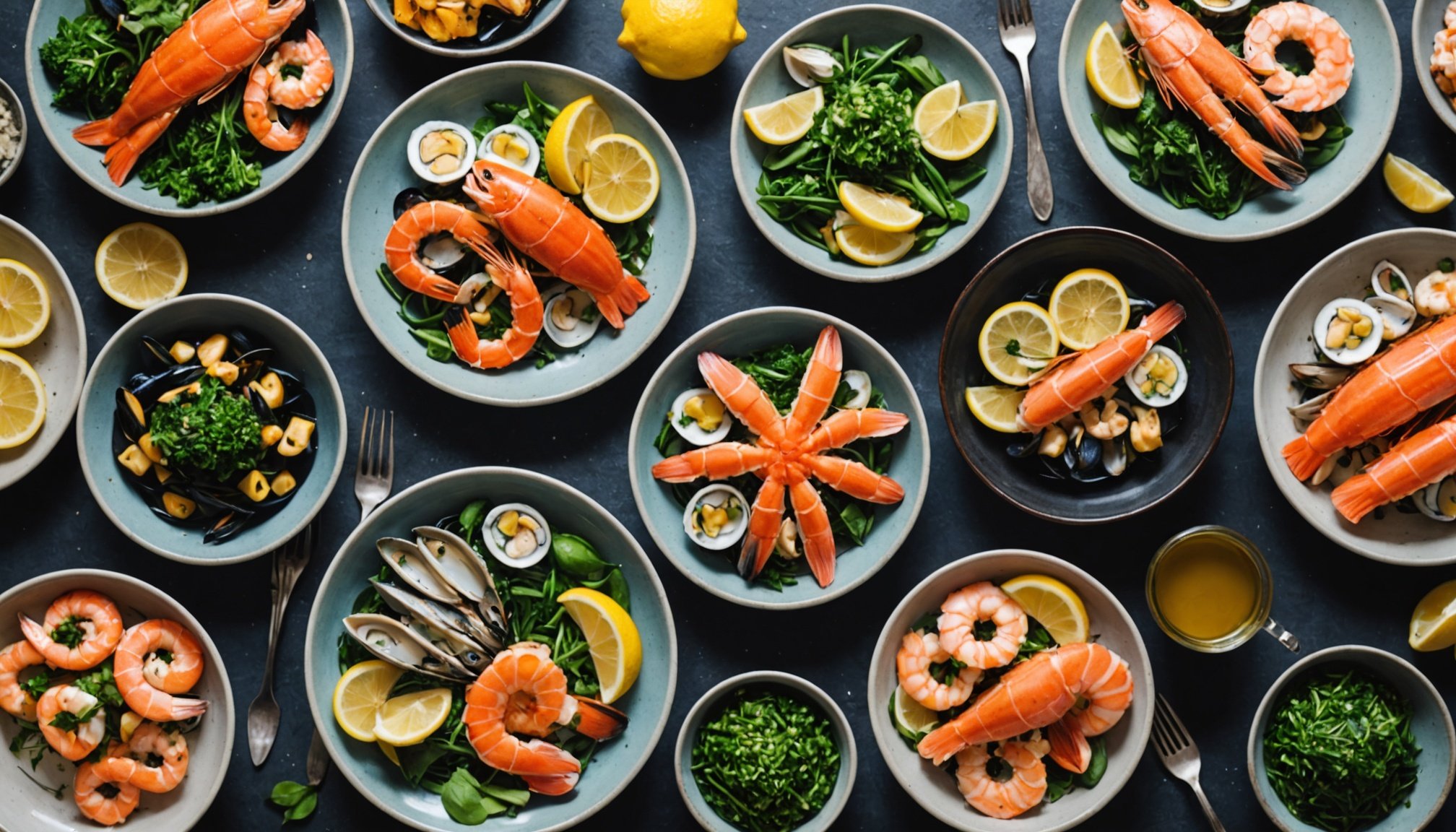Selecting eco-friendly seafood is essential for any restaurant aiming for sustainability. Diners increasingly seek dishes that align with their values, making it vital to adopt responsible sourcing practices. Considerations like overfishing, bycatch, and environmental impact play a significant role in making informed choices. This guide provides practical steps to curate a menu that not only delights diners but also supports healthy oceans. Embrace this opportunity to showcase your commitment to sustainability while elevating your culinary offerings.
Understanding Sustainable Seafood
Sustainable seafood is crucial for maintaining a balanced ecosystem and ensuring future generations can enjoy ocean resources. It refers to fish and shellfish sourced in a manner that considers the environmental impact, ensuring that the species can maintain healthy populations. This approach also minimizes harm to their habitats and supports the livelihoods of communities dependent on fishing.
Also read : Key considerations for successfully installing a commercial coffee roaster in your café
The environmental impact of traditional fishing practices can be severe, leading to overfishing, bycatch, and habitat destruction. Overfishing depletes fish populations faster than they can reproduce, while bycatch—the unintentional capture of non-target species—threatens biodiversity. Destructive methods, such as bottom trawling, can damage delicate marine ecosystems.
When sourcing seafood sustainably, consider these key factors:
Also to read : Explore Exotic Ingredients for Crafting One-of-a-Kind Ice Cream Flavors at Your Dessert Bar!
- Fishing methods: Opt for seafood caught using selective and less invasive techniques.
- Species: Choose species that are not overfished and have robust populations.
- Certification: Look for labels from reputable organizations like the Marine Stewardship Council, which ensure adherence to sustainable practices.
By understanding and prioritizing sustainable seafood, consumers can make informed choices that support the health of our oceans and the communities that rely on them.
Certifications and Standards for Eco-Friendly Seafood
Understanding seafood certifications is essential for making informed decisions about sustainable consumption. These certifications are established by organizations that set sustainability standards to ensure responsible sourcing.
Overview of Major Certifications
The Marine Stewardship Council (MSC) is a globally recognized certification that assesses wild-capture fisheries on their sustainability and environmental impact. The Aquaculture Stewardship Council (ASC) focuses on farmed seafood, promoting responsible aquaculture practices. Best Aquaculture Practices (BAP) provides comprehensive standards covering environmental responsibility, social accountability, food safety, and animal welfare.
Importance of Certifications in Sourcing
Certifications play a crucial role in ensuring that seafood is sourced through responsible practices. They help maintain ecological balance by preventing overfishing and reducing bycatch. For consumers, these certifications build trust, as they guarantee adherence to sustainability standards. They are also powerful marketing tools, enabling consumers to make choices that align with their environmental values.
Identifying Reliable Sources
To ensure seafood is genuinely sustainable, verify suppliers' certifications by checking the label's authenticity and cross-referencing with the certifying body's database. Ask vendors about their sustainability practices, such as their commitment to certified sourcing and transparent supply chains. This approach helps consumers confidently choose eco-friendly seafood options.
Assessing the Sustainability of Seafood
Understanding the sustainability assessments of seafood is vital for making environmentally responsible seafood choices. These assessments provide insights into the environmental impact of different seafood options, helping consumers make informed decisions.
One essential tool for evaluating seafood sustainability is the Seafood Watch program by the Monterey Bay Aquarium. It offers recommendations based on scientific data, helping consumers choose seafood with minimal environmental impact. Similarly, the Good Fish Guide by the Marine Conservation Society provides ratings on the sustainability of various seafood species, considering factors like stock levels and fishing methods.
The role of fishing methods is crucial in sustainability. Methods such as pole-and-line fishing and hand-gathering are more sustainable compared to destructive techniques like bottom trawling. These methods reduce bycatch and habitat damage, supporting healthier marine ecosystems.
Evaluating the carbon footprint of seafood options is another aspect of sustainability. Seafood transported over long distances or requiring energy-intensive farming methods may have a higher carbon footprint. Prioritising local and seasonally available seafood can significantly reduce this impact, supporting both environmental and community health. By integrating these assessments into purchasing habits, consumers can actively contribute to ocean conservation.
Local Seafood and Its Benefits
Embracing local seafood offers numerous advantages for restaurants, including fresher produce and community support. By sourcing seafood locally, establishments can ensure the freshness and quality of the dishes they serve, which enhances the dining experience. This practice also reduces the carbon footprint associated with transporting seafood over long distances, contributing to environmental sustainability.
Building relationships with local fishermen and suppliers is another significant benefit. These partnerships foster trust and transparency, allowing restaurants to have a clearer understanding of the sourcing practices involved. This connection not only supports the local economy but also encourages sustainable fishing practices within the community.
Seasonal menus are a creative way to incorporate local seafood, offering diners a variety of options throughout the year. By focusing on seasonal availability, restaurants can provide dishes that highlight the best of what local waters have to offer at any given time. This flexibility allows chefs to experiment with different flavours and textures, keeping the menu dynamic and exciting.
Incorporating local seafood and seasonal options can enhance a restaurant's reputation for quality and sustainability. By prioritising community sourcing, establishments can make a positive impact on both the environment and the local economy.
Implementing Eco-Friendly Practices in Your Menu
Incorporating eco-friendly practices into your menu design can significantly enhance customer engagement and promote sustainability. By clearly communicating the sustainability of your offerings, you can attract environmentally conscious diners and build a positive brand image.
Tips for Menu Labeling
To effectively communicate sustainability to customers, consider using clear and concise labels on your menu. Highlight eco-friendly options with symbols or brief descriptions that emphasize their environmental benefits. For instance, indicate dishes made with locally sourced or sustainably harvested seafood. This approach not only informs customers but also encourages them to make sustainable choices.
Case Studies of Successful Restaurants
Several restaurants have successfully transformed their menus to focus on sustainable seafood. These establishments often report increased customer satisfaction and loyalty. By sharing their experiences and lessons learned, they provide valuable insights for others aiming to implement eco-friendly practices. Key strategies include collaborating with local suppliers and regularly updating the menu to reflect seasonal availability.
Engaging Customers through Sustainable Practices
Promoting sustainability can significantly boost customer loyalty. Engage diners by educating them about the environmental impact of their choices. Use social media and in-restaurant materials to share stories of your sustainable practices. This transparency fosters trust and enhances your brand's image, encouraging repeat visits and positive word-of-mouth.











